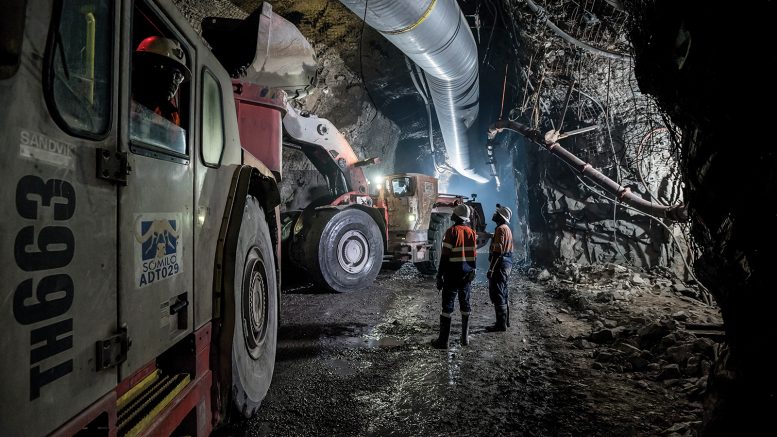Planned and unplanned maintenance shutdowns at Nevada Gold Mines in the US and Pueblo Viejo in the Dominican Republic have resulted in a 5.4% drop in the world’s second-largest gold miner by reserves, Barrick Gold’s (TSX: ABX, NYSE: GOLD) second-quarter output.
Preliminary June-quarter results dropped to 1.04 million oz. gold, from 1.1 million oz. in the prior period. The latest figure was below the Visible Alpha consensus estimate of 1.1 million oz.
A mechanical mill failure at Carlin’s Goldstrike roaster also weighed on the company’s production capacity.
“Assets jointly held by Barrick and Newmont missed expectations overall (except for Long Canyon), which is also a modest negative read-through to Newmont (NYSE: NEM),” says BMO Capital Markets analyst Jackie Przybylowski.
Newmont holds joint ventures with Barrick at Pueblo Viejo (Barrick 60%, Newmont 40%), where production was in line with expectations, and at the Nevada Gold Mines (Barrick 61.5%, Newmont 38.5%), where production missed at Turquoise Ridge (autoclave maintenance), and Carlin (roaster repairs), partly offset by a strong beat at Long Canyon.
Barrick now expects second-quarter all-in sustaining costs per ounce to be 6% to 8% higher sequentially with fewer ounces produced. This is above forecasts which previously called for declining costs and the consensus expectations of relatively flat results versus the first quarter.
Copper production rose 3.2% to 96 million lb. from the prior quarter, the company said.
Barrick said all-in sustaining costs per pound are expected to be 20% to 22% higher than the prior quarter, mainly due to lower sales at Lumwana mine in Zambia and maintenance at Zaldivar mine in Chile.
Copper costs are expected to rise significantly in the most recent quarter – up 13% to 15% for C1 cash costs and 20% to 22% for all-in sustaining costs, above the consensus expectations of 2% and 7.5%, respectively. Lower volumes at Lumwana, maintenance at Zaldívar, and higher royalty charges contribute to the cost increases.
The company restated its gold and copper production is weighted towards the second half of 2021.
Barrick recently said the significant exploration successes could extend the life of its Tongon gold mine in the Ivory Coast.
Barrick has also made recent progress in restarting the significant Porgera gold mine in Papua New Guinea, hopefully, this year still, after reaching an agreement with the government in April.
The company reiterated it remains on track to achieve 2021 guidance. Africa, the Middle East, Latin America, and the Asia Pacific are trending to the higher end of regional gold guidance ranges and North America to the lower end.
“This has a potential negative read-through for Newmont, as the Nevada Gold Mines joint venture is in this region,” says Przybylowski.
As of December 31, 2020, at a gold price of US$1,500 per oz., Barrick reported attributable measured and indicated resources of 3,3 billion tonnes at 1.52 gram per tonne for 160 million oz. gold, with a further 980 million tonnes at 1.4 gram per tonne for 43 million ounces in the inferred category.
“We continue to rate Barrick and Newmont ‘outperform’ with a slight preference for Barrick going into Q2 reporting on expectations of weakness at other Newmont assets (namely Tanami),” says Przybylowski. “We are reducing our Barrick one-year target to US$30.00 per share (from US$32 per share) as we reflect Q2 reported production.”
Barrick is scheduled to report second-quarter results on August 9.
By midday Thursday trading, Barrick’s stock was down 1% on the NYSE. The company has a US$37.5 billion market capitalization.


Be the first to comment on "Barrick’s Q2 gold production lower on production outages"